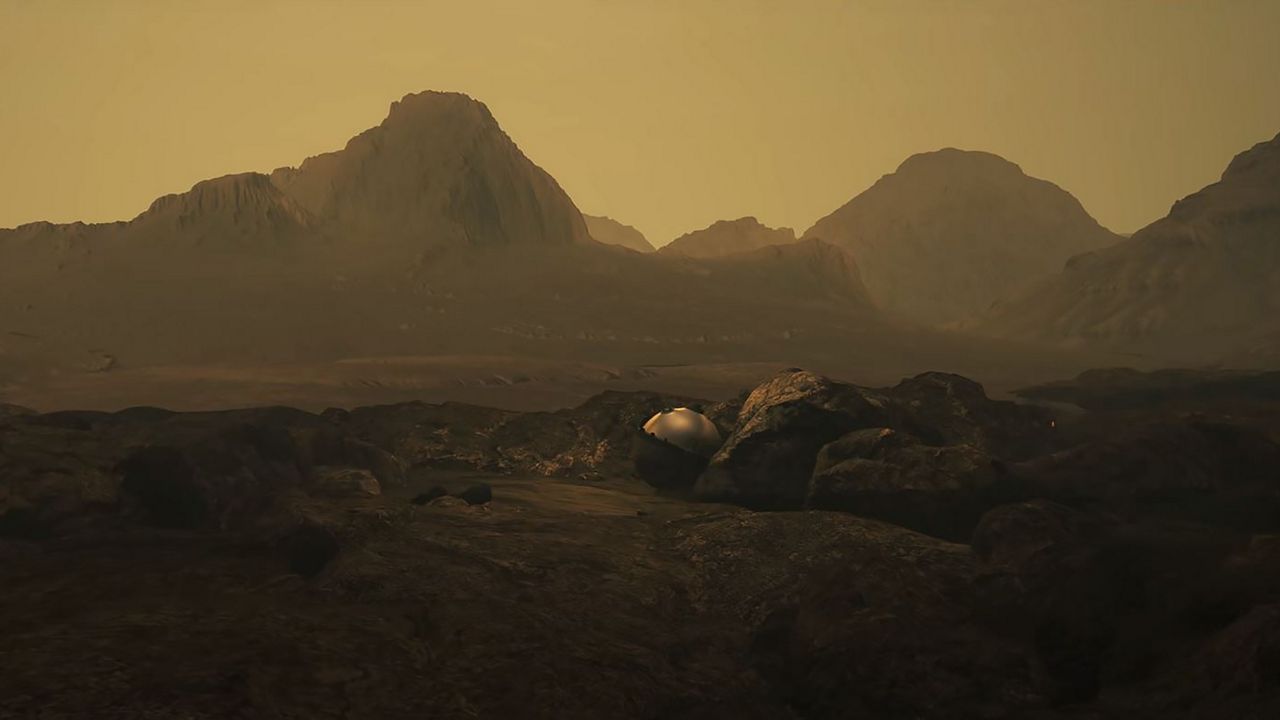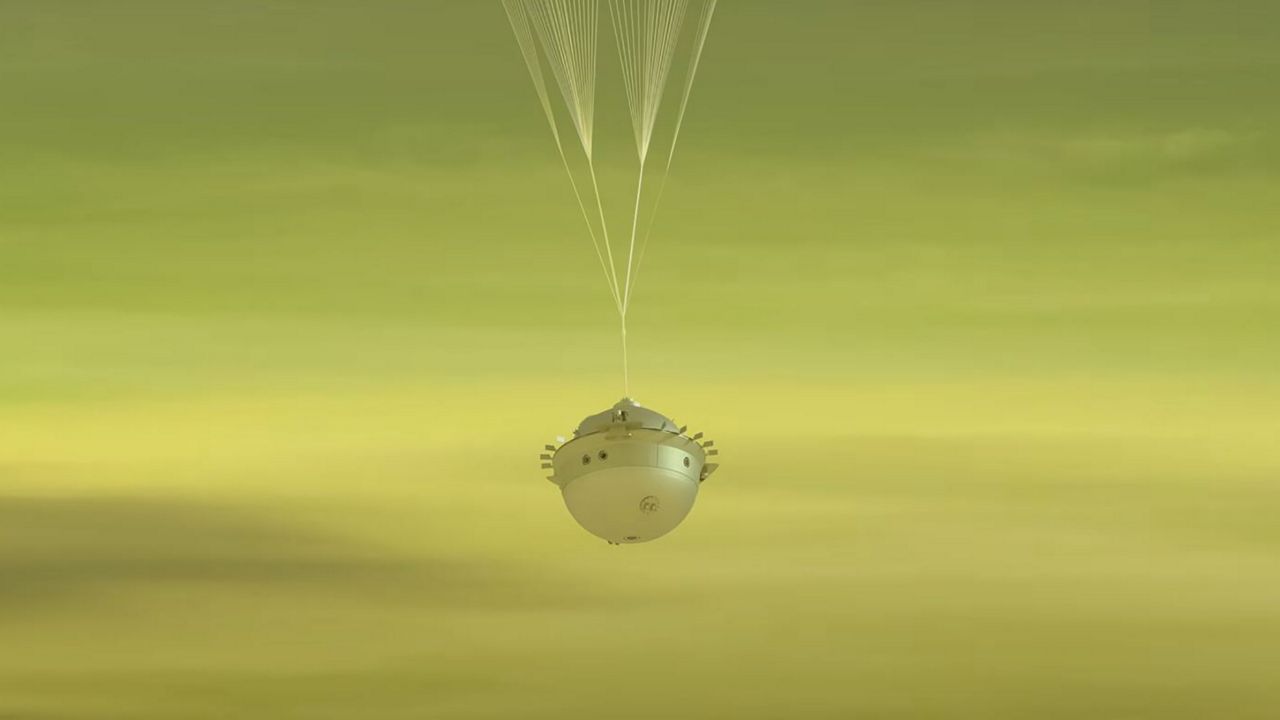In a few short years, NASA plans to launch the DAVINCI mission to further explore Venus, its hellish landscape, and discover if it ever had water.
What You Need To Know
- In 2029, NASA plans to launch its DAVINCI probe to Venus in the hopes of uncovering some of the planet's mysteries
- CRIS is the spacecraft that will carry the DAVINCI probe to Venus
- DAVINCI will descend to the hot planet, while CRIS will have its own mission in orbit
- RELATED: Understanding Venus for the DAVINCI mission
- 🔻 Scroll down to learn the basics of Venus 🔻
Understanding the mission
In 2029, NASA plans to launch the DAVINCI mission into the great beyond, to explore Earth’s twin sister Venus.
The mission is named after the famed Italian Renaissance artist and inventor Leonardo da Vinci, “because the mission is to bring the art of science and technology to Venus,” explained Dr. James Garvin, the project’s principal investigator, to Spectrum News.
DAVINCI is also an acronym: Deep Atmosphere Venus Investigation of Noble gases, Chemistry, and Imaging.
Garvin and the DAVINCI Team explained that the Carrier Relay Imaging Spacecraft (CRIS) will be carrying the DAVINCI probe as it travels to Venus.
With gravity-assisted flybys, CRIS’ mission will be to orbit the planet twice and with its own instruments, it will study Venus’ cloud tops in ultraviolet light. It will also examine the heat coming from Venus’ surface on the planet’s night side. The planet has a night side, but it differs wildly from Earth's since it takes 243 Earth days for Venus to rotate and complete a single day.
After seven months of the second flyby, on June 2031, the CRIS spacecraft will drop DAVINCI, a 3-foot-wide atmospheric descent probe with a titanium pressure shell. In many ways, it is like a deep-ocean submersible that is used to explore famous shipwrecks like the Titanic, Garvin and his team said.
“This descent sphere protects the five key instruments inside from the constantly varying environmental conditions from -50 C (-58 F) at the top of the clouds to 450° C (840° F) near the surface,” the DAVINCI Team stated in an email.
In fact, Garvin said that the atmosphere is sort of like a large body of water.
“Venus has an ocean of air to explore … it is more like deep-ocean exploration,” he said about the conditions DAVINCI will experience as it descends into the planet’s thick, toxic atmosphere.
DAVINCI will parachute down for about an hour before reaching the ground, Garvin said. During its descent, the probe will take measurements that will include wind speed, temperature, pressure and measuring gases.
The first half hour of DAVINCI’s descent will be spent in the thick clouds of mostly carbon dioxide, taking measurements of the chemistry of that environment, while the last half hour will be in a nearly 30-mile-per-hour freefall, taking images of the mountains, Garvin explained.
He said the probe will take the first high-resolution photos of Alpha Regio, a plateau twice the size of Texas with jagged mountains. Some scientists theorize that at one point in the planet’s past, Alpha Regio may have been part of a continent.
“We will see the mountains how we are used to seeing,” Garvin said, explaining that the DAVINCI probe will have high-tech cameras to capture the mountains. If all goes well, he said nothing should be pixelated in the photos beamed back to Earth.
The probe will take digital photos in the near infrared that will provide information on landscapes, and they will help form 3D topography maps.

Garvin also said the purpose of the mission is not to actually land on Venus, like a traditional lander or a rover. The DAVINCI probe does not have any landing legs. It will simply land, but it does not mean it will survive too long on the planet, where the pressure is crushing and temperatures can be around 900° degrees Fahrenheit.
“If the DAVINCI probe were to survive and maintain radio (contact) with our overflying spacecraft (CRIS), it could operate for up to 17 minutes before it will lose the radio contact and become too hot to operate effectively," the DAVINCI team said. "If it survives the touchdown, the probe will relay all of the data acquired in the final few hundred meters of descent and acquire more chemistry data with its powerful analytical instruments as well as environmental data."
Purpose of the DAVINCI mission
By exploring Venus, Garvin said his team hopes to learn about the planet's past, and perhaps how Earth and Mars evolved.
“She’s holding secrets,” he said.
The mission may help solve some of the mysteries of Venus, like if the planet ever had liquid oceans or flowing water like rivers. Scientists say they want to find out if it had a life-as-we-know-it habitable environment, and if so, how the planet lost it.
“Did Venus have oceans for billions of years as some models suggest or only a steamy early atmosphere that quickly dried up due to intensive volcanism or other processes?” the team said.
These are just some of the questions that Garvin and the DAVINCI team hope to answer, and they say some of those answers might be found in the mountains and rocks.
For example, were the mountains and rocks formed by volcanoes or by water and wind, or a combination of both? Will the mountains show signs of erosion? Questions like these are the ones Garvin and his team hope to get answers to.
In addition, the team hopes to discover clues in the planet’s atmosphere that will explain its current runaway greenhouse state, which makes Venus the hottest planet in the solar system.
It is even hotter than Mercury, despite being farther away from the sun. Garvin said Venus’ thick atmosphere of carbon dioxide and clouds of sulfuric acid have trapped head and created a greenhouse effect. The heat on Venus is so intense that it could melt lead, explained Dr. Amy Williams, a planetary scientist and astrobiologist at the University of Florida.
Click here to discover what she has to say about Earth’s sister.
And with new technology, it means more things are expected to be discovered about the planet Venus. After all, the last time humans sent anything to the planet Venus, it was the former Soviet Union back in the 1980s.
The other aspect of the mission, Garvin said, is to help understand exoplanets — planets that are outside of our solar system.
Garvin explained that Venus is like an exoplanet that is next door. Because the James Webb Space Telescope is discovering new planets, many of them can be like Venus, he said.
So, to better understand these new planetary discoveries, it is best to know more about Earth’s sister, Garvin said.
In addition, he said all of these things might give a clue to Earth’s possible future.
“Finally, Venus’ evolution from a possibly habitable ‘ocean world’ to its current hellish state (with no oceans) is important for us here on Earth, as it connects to various pathways for the long-term evolution of our habitable home planet,” stated the DAVINCI Team.
